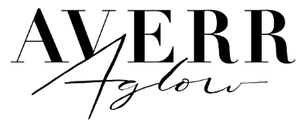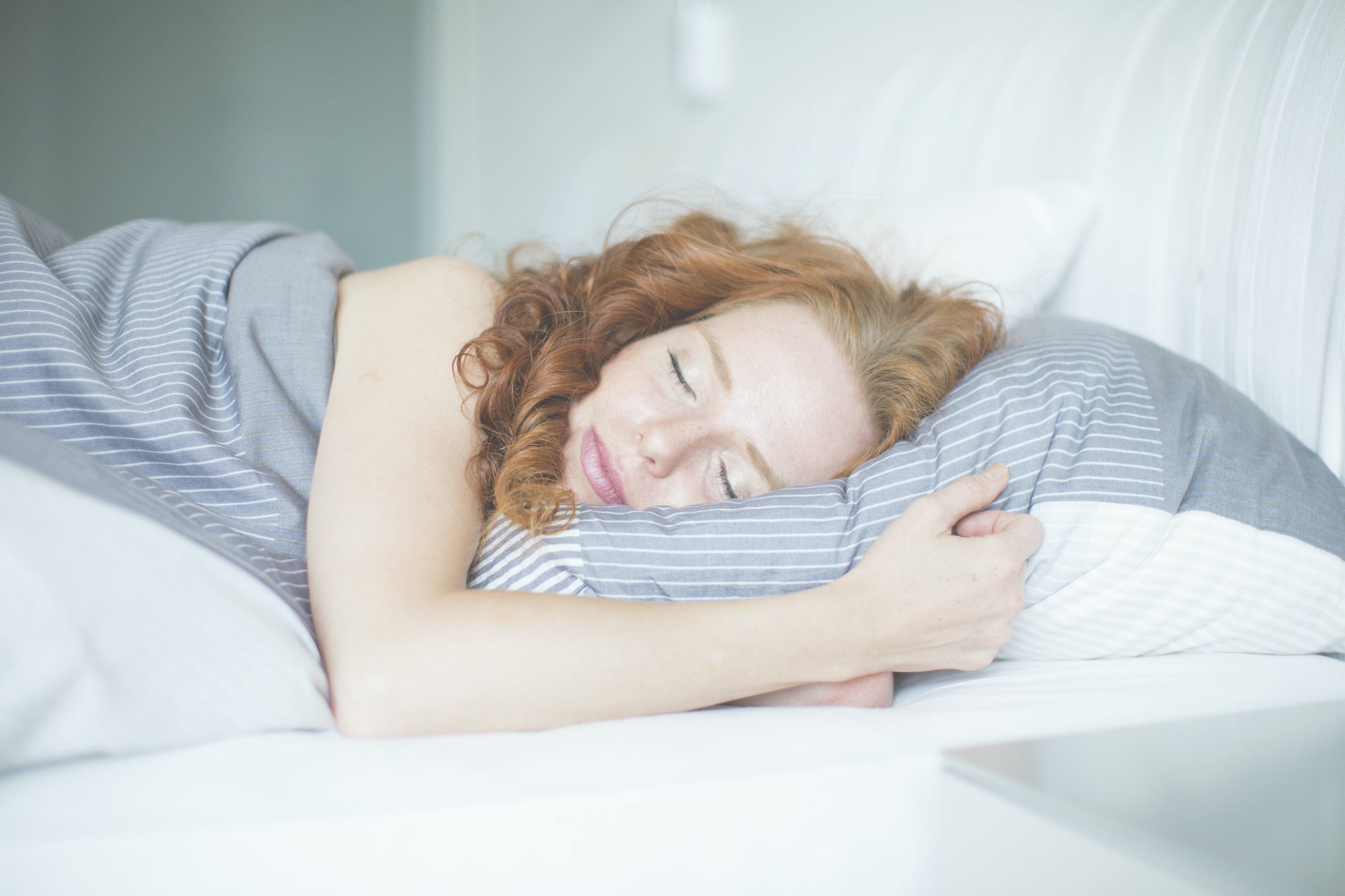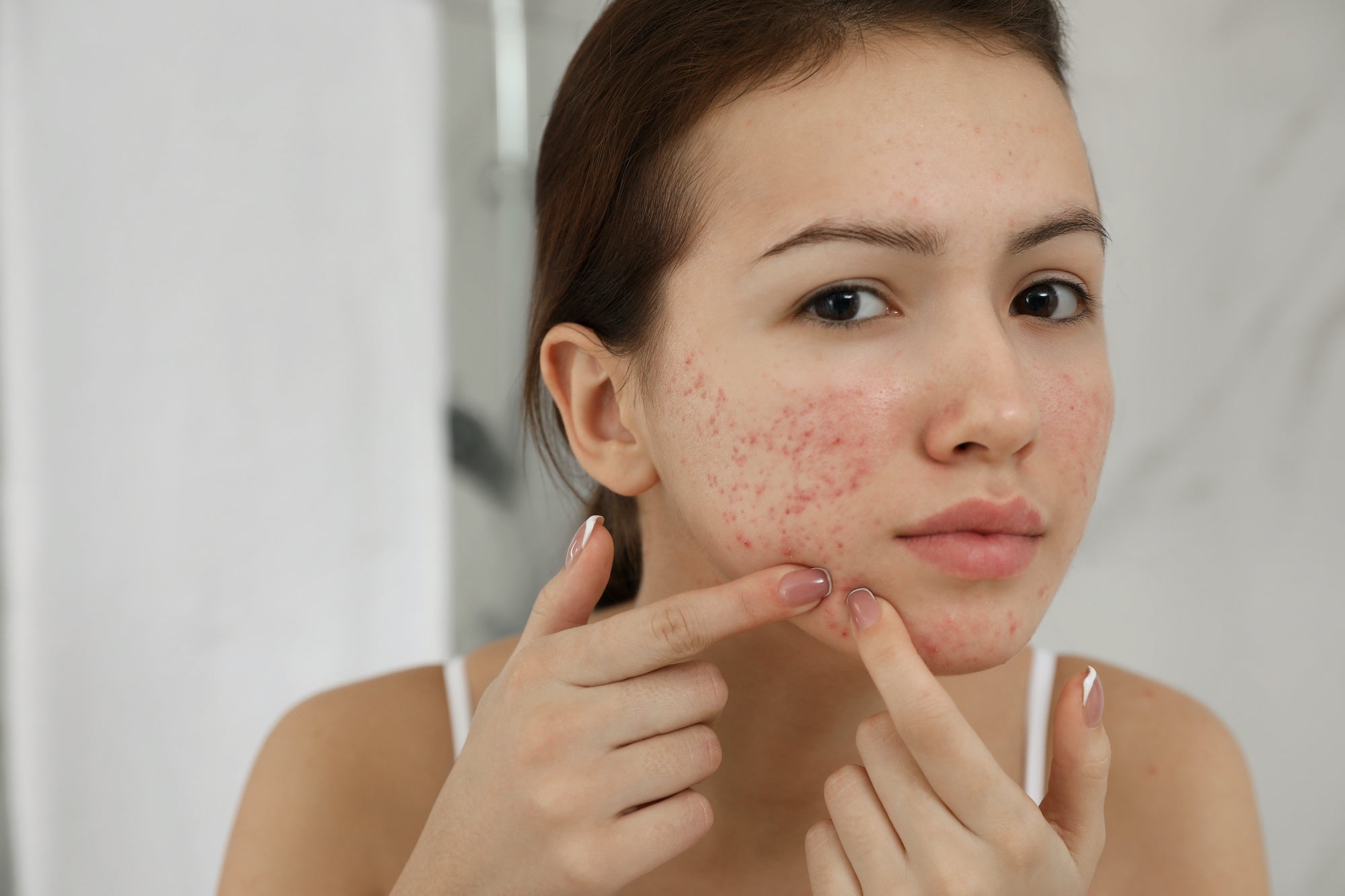
5 Types of Acne Scars - and Why You Should Care
Who hasn’t experienced the sheer horribleness of acne? Single-handedly, they can turn any day into a total self-confidence downer! But what happens when a breakout finally clears up?
For many people, breakouts are only the first step. Many will go on to deal with something even worse...acne scars! While acne can clear up eventually, the scars that it can leave behind are tough to get rid of! Especially if you don’t understand why they happen in the first place.
My motto is that prevention always starts with knowledge. So, it’s important to understand your skin and what it’s going through to accurately tackle the problem once and for all.
Let’s discuss everything we need to know about acne scars!
What are Acne Scars?
We all know the sadness that overwhelms us as we see yet another scar added to the lineup of offenders on our faces, but often we don’t know how they get there. Luckily, they don’t just appear out of thin air, and there is a reason behind the mystery that is scarring, my friend.
The two main categories are atrophic scars (caused by a loss of tissue) and hypertrophic scars (caused by an excess of tissue).
Atrophic scars heal below the normal layer of the skin tissue, which produces a little indentation in the skin.
A hypertrophic scar is the exact opposite and can cause a raised scar because of excessive deposits of collagen.
No matter if you’re dealing with Atrophic or Hypertrophic, the chances are that you will have a lasting scar and a heck of a time getting rid of it!
So, that leads us to what the five types of acne scars are, why they occur, and what you can do about them!
The Five Types of Acne Scars
The moment of truth has come! Drum roll, please!
Below are the five types of acne scars explained! No need to thank me, friend…
Or you can just wait until the end and then thank me. That works!
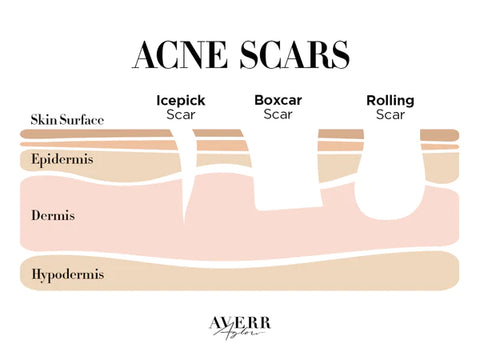
1. Ice Pick Scars
First on the list is ice-pick scars. Honestly, just as unpleasant as its name, these are deep, narrow scars that extend into the dermis (or the deeper layers of the skin).
What does it look like: Often an ice pick scar looks like your skin has been punctured with a sharp instrument or an “ice pick.” And, because of the way it heals, it makes a tiny, little hole in the skin. While this sounds SUPER scary, not everyone will experience that shape. For some, it may even have the appearance of a larger-than-usual pore.

2. Box Car Scars
These little round or oval depressions in the skin are very similar to ice-pick scars, but they usually are accompanied by wide vertical sides.
What does it look like: They can appear as jagged or pitted and are usually broader depressions in the skin.
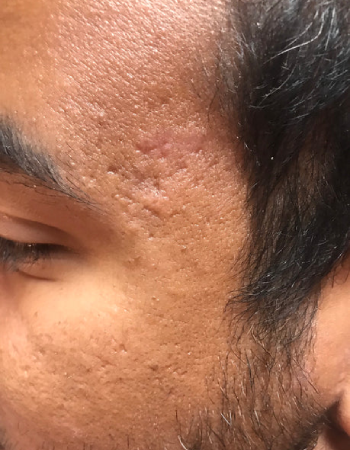
How do they happen: When an inflammatory breakout occurs, it destroys the collagen in that area of the skin, which results in a loss of tissue. At that point, the skin is left without its defenses, and this creates a noticeable indentation.
3. Hypertrophic and Keloid Scars
Hypertrophic, Hypertrophic, Hypertrophic, try to say that three times!
These are pretty different from the ones above because they create raised scars that grow above the surface of the skin. Commonly found on the torso, especially in men, these can also happen in multiple places on the body.
A great example of a hypertrophic scar is the dreaded Keloid! So many of us have heard about Keloids, but if you’re like me, you didn’t understand what they were or how in the world they happened. So, the quick answer is that they are a more severe raised scar. The only difference between these and the standard hypertrophic scars is that keloids usually grow larger than the original wound and can continue to grow long after it has healed. Freaky right?
How They Develop: Unlike ice pick and boxcar scars, hypertrophic scars are not caused by a loss of tissue. Instead, they develop through the overproduction of collagen after a deep wound or trauma. In the case of keloids, it's like the skin doesn't know that the wound has healed, and continues to produce collagen.
Does this honestly leave one question? ...Why does the skin have to be so extra?!
4. Post-Inflammatory Hyperpigmentation
This one is the odd man out and it’s mainly because Post-Inflammatory Hyperpigmentation, or POI, is not technically scarring.
I know, I was shocked too! But, honestly, POI strikes many as a type of scarring because, just like with a bruise, POI will leave a darker mark after trauma to the skin (in this case, acne).
What does it look like: POI appears on the skin as darker spots and can have no particular shape. They can be round, oval, or have no rhyme or reason at all. Often, they are also darker than your actual skin color and have a smooth texture.

How does it happen: POI is the result of the skin healing after an acne attack (Yay!). But, the excess melanin runs to the rescue a little too much and causes an overproduction of melanin (Boo!). Those with darker complexions are usually more prone to this type of scarring.
There is good news, though, friend! These are one of the only scars that can and usually do, fade over time on their own.
5. Rolling Scars
Last in the group is rolling scars. These tend to make wave-like depressions across the skin that would otherwise look fairly normal. They differ from some of the previously listed because they aren't sharply defined.
What does it look like If you have rolling scars, your skin may look uneven, wavy, or crooked.
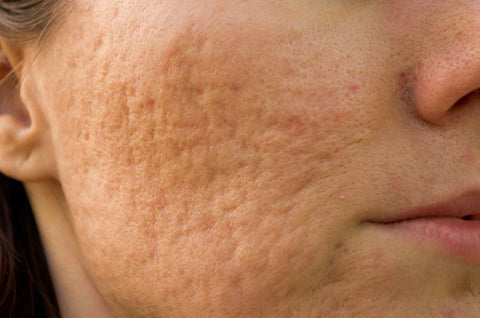
It’s All in What You Know
If you’re like me, acne scars just seemed like the normal aftermath of a bad breakout. But friend, that should not be our norm! Now that you know the different types of acne scars and how they happen, you need to know the solution. For me, that has always been stopping acne at the root and making sure that my skin is rejuvenated to tackle the scars that I already have.

